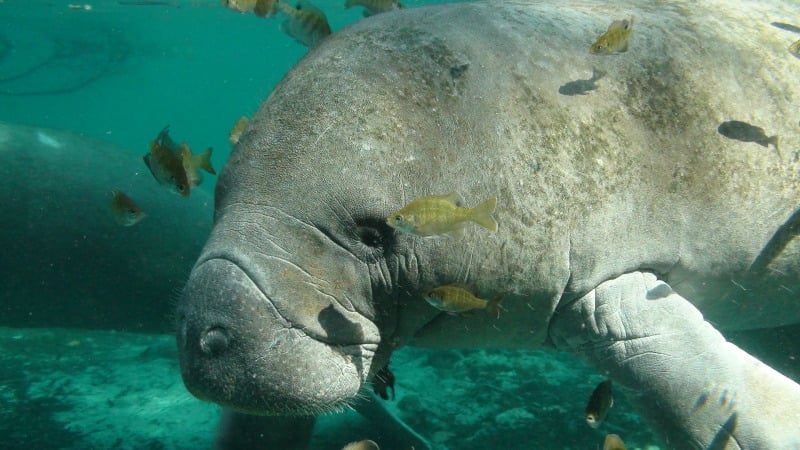Manatees are large, gentle sea mammals that live in shallow coastal waters. The manatee resembles a large seal but is not related to seals. Furthermore, these incredible sea creatures can grow up to 10 feet long and weigh up to a thousand pounds. They are also known as sea cows and have fascinating biology and behaviors. But did you know that they use their farts for swimming?
Manatees swim using their farts. They hold in their gas to help them get closer to the ocean’s surface and then expel it to help them return to the bottom.
Farts for Floaters
Manatees use flatulence to help them regulate their buoyancy. Manatees do, in fact, fart! Many animals, including manatees, produce methane gas in their digestive tracts. This gas is produced when bacteria break down plant material eaten by the animal. Methane gas accumulates in manatees’ large intestines and exits the body as flatulence.
Manatees float to the water’s surface by storing gas in a special intestinal pouch. A manatee emits gas to sink to greater depths (yes, it farts!). Manatees benefit from this adaptation because they frequently need to change depths in the water to find food or avoid a rare predator. Furthermore, manatees swim to lower depths to avoid being harmed by boats and ships.
Constipation impairs a manatee’s ability to move through the water because passing gas is so important to their buoyancy. So, if you see a live manatee floating tail-up near the water’s surface for a while, it’s probably having digestive problems. (Source: A to Z Animals)
The Manatee’s Extremely Long Intestines
The manatee’s digestive tract is impressive, with nearly 150 feet long intestines! Because digesting their mostly plant-based diet takes time, manatee intestines are very long.
A study of the GI tracts of Florida manatees discovered that the long length of their intestines is required for breaking down the fibrous plant foods they consume.
This digestion process can last up to a week! Because of their long intestines, enlarged hindgut, and other digestive system adaptations, manatees can extract many nutrients from the plants they eat. (Source: A to Z Animals)
Teeth in, Teeth Out
Manatees have four pairs of back teeth known as “marching molars,” which are constantly replaced. The manatee is the only mammal that continues to lose and replace teeth throughout adulthood.
A new molar can erupt at the back of the manatee’s jaw up to six times during its lifetime, pushing an old molar forward. Then, as the front molars wear down, they fall out. This is referred to as hind molar progression. It keeps the manatee’s chompers sharp for munching on their favorite food. (Source: A to Z Animals)
Tinie Tiny Brain
The manatee’s brain is tiny in comparison to its body size. The brain of a manatee is similar in size to that of a human, but manatees are much larger animals. In other words, the brain of a manatee takes up less space in its head than the brain of a human.
But don’t be fooled by this size comparison. Manatee brain-to-body ratio indicates that manatee bodies are massive! Nonetheless, their brain functions normally. Manatees are intelligent animals with similar comprehension skills to dolphins. These gentle giants move slowly but learn quickly. (Source: A to Z Animals)
Image from Doi.Gov
